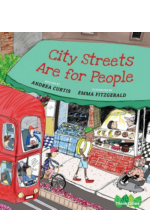
Young Fred Urquhart was fascinated by insects, especially his favorite, the monarch butterfly. He wondered where monarchs spent the winter. No one knew. After he became an bug scientist, Fred and his wife, Norah, tagged hundreds of butterflies, hoping to solve the mystery of the monarchs. But they soon discovered that they needed help. They started a “butterfly family,” a community of children, teachers, and nature enthusiasts from three countries, Canada, the United States and Mexico, to answer the question: Where do the monarchs go?
The Mystery of the Monarchs was the WOW Recommends: Book of the Month for June 2023.










